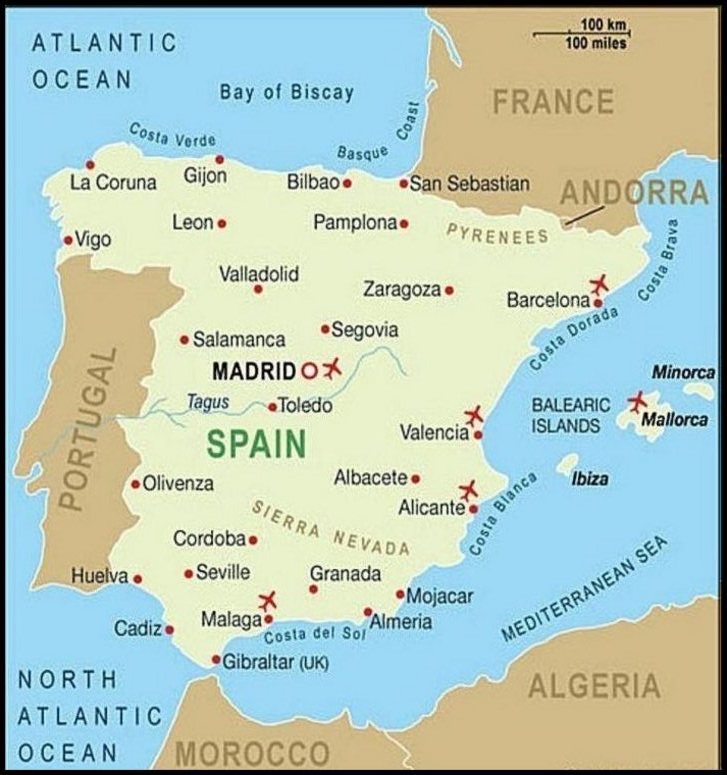Understanding Madrid Time Zone: A Comprehensive Guide
When it comes to time zones, Madrid, the capital of Spain, is a fascinating subject that affects both locals and travelers alike. Understanding the Madrid time zone is essential for anyone planning to visit the city, conduct business, or communicate with friends and family living there. This article will explore the intricacies of the Madrid time zone, its historical context, and its impact on daily life.
Madrid operates under Central European Time (CET) during standard time and Central European Summer Time (CEST) when daylight saving time is in effect. This system not only dictates the local time but also influences various activities such as business hours, travel schedules, and even social interactions. In this comprehensive guide, we will delve into the specifics of the Madrid time zone, providing valuable insights for both residents and visitors.
In addition to explaining the current time zone, we will also address common questions, highlight historical changes, and offer practical tips for navigating time differences. Whether you are planning a trip to Madrid or need to coordinate with someone in the city, this article aims to equip you with all the necessary information.
Table of Contents
- 1. Madrid Time Zone Overview
- 2. Historical Context of Madrid Time Zone
- 3. Daylight Saving Time in Madrid
- 4. Impact of Time Zone on Daily Life
- 5. Traveling Across Time Zones
- 6. Coordinating with Madrid
- 7. Frequently Asked Questions
- 8. Conclusion
1. Madrid Time Zone Overview
The Madrid time zone is classified as Central European Time (CET), which is UTC+1. This means that Madrid is one hour ahead of Coordinated Universal Time (UTC). During the summer months, the city shifts to Central European Summer Time (CEST), which is UTC+2. This transition typically occurs on the last Sunday of March and reverts on the last Sunday of October.
Current Local Time in Madrid
To understand the current local time in Madrid, it is essential to keep track of the daylight saving time changes:
- Standard Time (CET): Last Sunday in October to the last Sunday in March
- Daylight Saving Time (CEST): Last Sunday in March to the last Sunday in October
2. Historical Context of Madrid Time Zone
The history of Madrid's time zone dates back to the late 19th century when Spain officially adopted CET in 1900. Prior to this, the country had no standardized time, leading to confusion and discrepancies. The decision to adopt CET was influenced by various factors, including the desire to align with other European countries and improve communication and transportation.
Over the years, Spain's time zone has seen several changes, especially during World War II, when the country briefly switched to a different time zone. However, it ultimately returned to CET, which has remained in effect ever since.
3. Daylight Saving Time in Madrid
Daylight saving time (DST) is a practice that many countries, including Spain, implement to make better use of daylight during the longer days of summer. In Madrid, this means adjusting the clock forward by one hour during the summer months.
Benefits of Daylight Saving Time
- More daylight in the evenings, allowing for outdoor activities
- Reduced energy consumption
- Potential economic benefits through increased tourism and retail activities
4. Impact of Time Zone on Daily Life
The Madrid time zone significantly impacts daily life, including business hours, social events, and cultural activities. For instance, typical working hours in Madrid usually start around 9:00 AM and end around 6:00 PM, with a long lunch break from 2:00 PM to 4:00 PM.
Social Life and Time Zone
Social interactions are also influenced by the Madrid time zone. Spaniards typically have dinner later in the evening, often starting around 9:00 PM or even later. Understanding these cultural nuances can enhance the experience of visiting or living in Madrid.
5. Traveling Across Time Zones
Traveling to Madrid from different time zones can lead to jet lag, a common issue for many travelers. It is essential to plan ahead and consider the time difference when making travel arrangements.
Tips for Overcoming Jet Lag
- Adjust your sleep schedule before traveling
- Stay hydrated during the flight
- Expose yourself to natural light upon arrival
6. Coordinating with Madrid
If you are coordinating activities or meetings with someone in Madrid, it is crucial to be aware of the time difference. Here are some practical tips:
Best Practices for Coordination
- Use online world clock tools to check the current time in Madrid
- Confirm time zones when scheduling meetings
- Be considerate of cultural norms regarding time (e.g., meal times)
7. Frequently Asked Questions
Here are some common questions regarding the Madrid time zone:
- What is the current time in Madrid? You can check the current local time using various online resources or world clock applications.
- When does daylight saving time start and end in Madrid? DST begins on the last Sunday of March and ends on the last Sunday of October.
8. Conclusion
Understanding the Madrid time zone is essential for anyone looking to engage with the city, whether for business or leisure. From its historical context to the impact on daily life and travel, this comprehensive guide has covered important aspects of timekeeping in Madrid. We encourage readers to take note of the time differences, especially when planning visits or coordinating with locals.
Feel free to leave your comments or share your experiences regarding the Madrid time zone. You may also want to explore our other articles for more insights into travel and culture.
Thank you for reading, and we look forward to seeing you again on our site!
Yellowjackets Season 3 Release Date: What Fans Need To Know
Archie Riverdale: The Iconic Character And His Impact On Pop Culture
Josh Connor And Christine Baumgartner: A Love Story Unveiled


